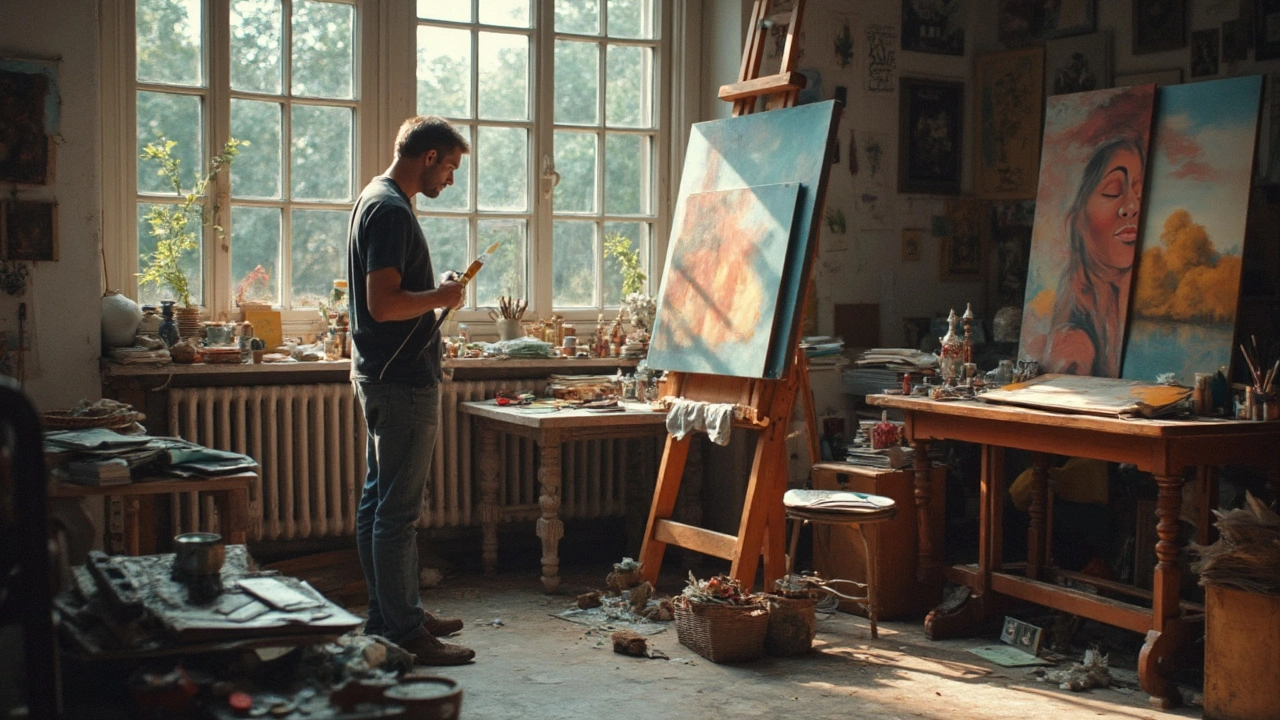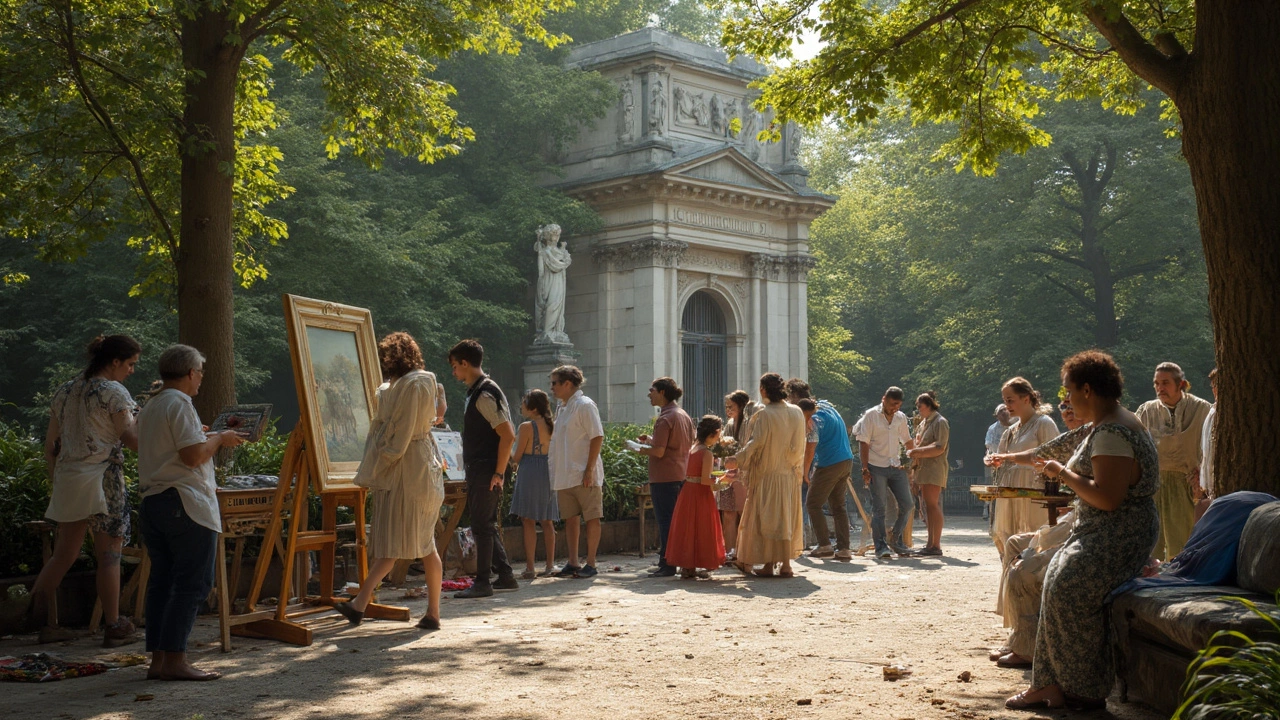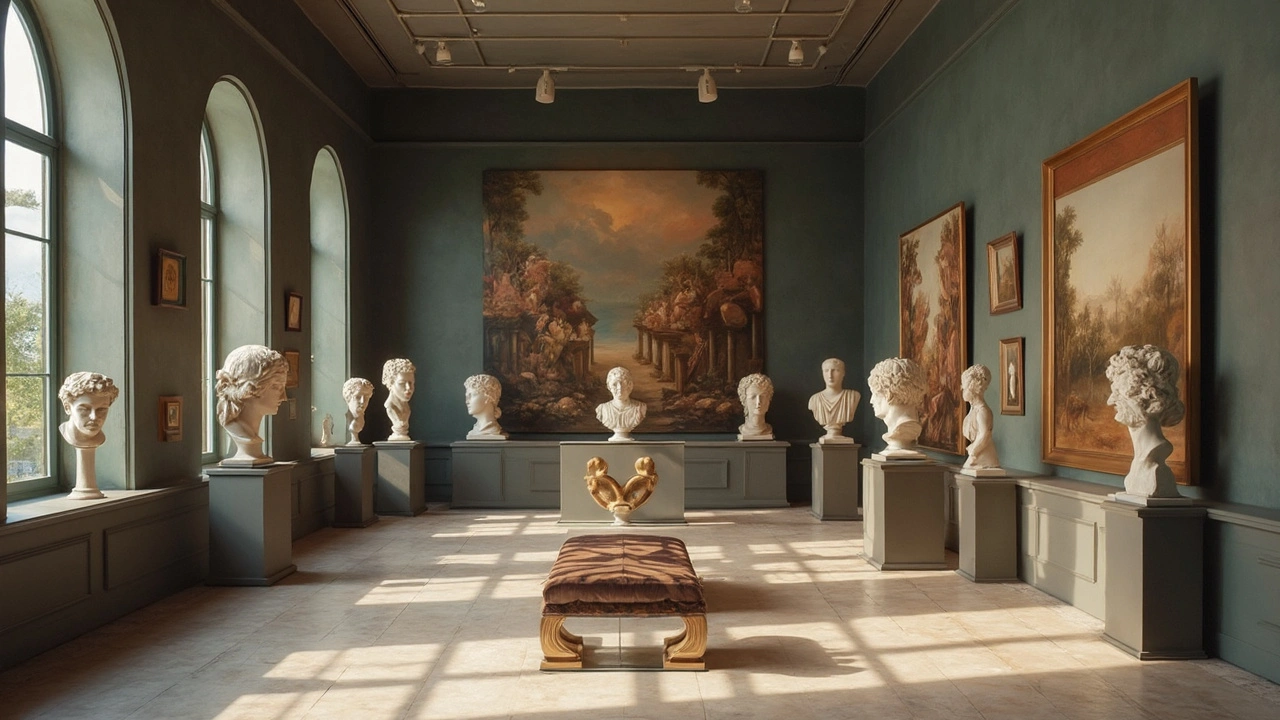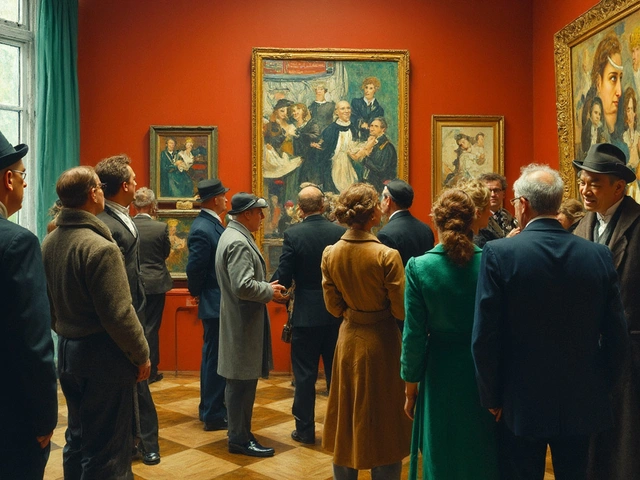Ever looked at a modern piece of art and felt like you'd seen its essence somewhere before? That's Classicism for you, weaving its magic through the hearts of contemporary artworks. Even though modern art is all about breaking the rules, the classic charm of symmetry, balance, and proportion creeps in, making folks stop and nod. It's kinda wild how something so ancient still feels fresh and inspiring, don't you agree?
Take a stroll down memory lane into the world of Classicism. Imagine ancient Greece or Rome, where everything was about elegance and order. Artists back then were into creating beauty that spoke to the soul. Fast forward to today, and that same vibe sneaks into modern pieces, giving them a timeless twist. It's like our minds are wired to dig balance and harmony, no matter how much time flies by.
- The Roots of Classicism
- Classic Elements in Modern Art
- Famous Modern Artists Inspired by Classicism
- Why Classicism Still Matters
- Incorporating Classicism into Your Art
The Roots of Classicism
Alright, let's time travel back to the glory days of ancient Greece and Rome, where Classicism all kicked off. These folks were obsessed with perfection. Ever seen those marble statues? Perfect muscles, poised expressions—they were all about ideal beauty. It wasn't just about looking good but capturing the human spirit with balance and proportion. They set the stage for how we understand art.
This classical approach wasn't just a passing phase. It stuck around because it made sense. Think about a building with columns and perfectly spaced windows. That's symmetry and order right in front of you. Those are the same principles the ancient artists were using. And talk about influence! We still see this in today's city architecture. When we seek beauty, we're often chasing these very ideas.
The Renaissance brought another Classicism revival. It was like the ancient philosophy had a grand comeback. Artists like Leonardo da Vinci and Michelangelo took these old-school principles and pushed them to new heights. They weren't just copying; they were innovating, making art more realistic and full of life. That said, the classic vibe didn't always get the spotlight. Movements like Baroque and Rococo came in, where things got a bit more ornamental and flashy. But Classicism? It never really went away. It was waiting in the wings, ready to inspire new generations. It's the timelessness that keeps it in the art world's heart.
Classic Elements in Modern Art
Ever noticed that even the craziest modern art pieces have this weird knack for balance? That's a nod to Classicism right there. Even when artists are pushing boundaries, that love for order and perfection sneaks in. It’s like they're instinctively borrowing from the old-school charm of ancient Greece and Rome.
When you think about it, the use of symmetry and proportion is everywhere. Take buildings, for instance. Neo-classical architecture uses clean lines and balanced forms that make even the newest skyscrapers look serene and grounded. This blending is about paying homage to the past without being stuck in it.
Art lovers often notice that modern artists like Pablo Picasso or Henri Matisse, despite their abstract styles, were inspired by classical ideals. They incorporated precise geometry and balanced compositions into their works. Matisse's 'Dance' might seem wild at first glance, but it's rooted in circular movement and simple, harmonious forms reminiscent of classical art.
And it's not just visual art. Consider fashion. Designers like Karl Lagerfeld, who long embraced classical themes through structured silhouettes and clean lines, showing just how deep this influence runs.
We even see this in photography and digital art. Artists play with light and shadow to focus on shapes and lines, highlighting elements that echo classical sculpture. It’s like a modern remix where they take those timeless elements and make us see them in a new light.
So, even if you're not living amidst marble statues, the undying spirit of Classicism wraps around us, gently guiding modern expressions of creativity into something familiar yet excitingly novel.

Famous Modern Artists Inspired by Classicism
While some might think that modern art means tossing old rules out the window, a bunch of today’s artists actually draw heaps of inspiration from Classicism. It’s all about blending the timeless with the trendy!
Take Pablo Picasso, for example. He might be famous for Cubism, but he had a deep appreciation for classical art's clean lines and proportion. In his Neoclassical Period, Picasso brought in elements that were pretty much an ode to the classic styles. It was like he was saying, "Hey, the past is kinda cool too.”
Then there’s Jeff Koons, who often mixes classical forms with modern themes. His sculptures, like the 'Venus,' echo ancient Roman aesthetics but with a shiny twist that screams 'now'. It’s sort of like taking a page from history but adding your own flair to it.
We can’t skip over Kehinde Wiley, who’s renowned for his portraits that reimagine famous works with modern figures. By using poses from historical, classical paintings, Wiley makes the old feel vibrant and new. His work tells us that the spirit of Classicism is not just hanging out in museums but jumping into our daily lives.
And don’t forget about Jenny Saville, whose large-scale paintings often feature a hefty dose of classical inspiration. She successfully merges a love for classical form with contemporary subjects. Her work acts as a bridge, showcasing how the past and present can coexist.
Classicism might seem like it’s all about rigid rules, but these artists prove it’s more about timeless beauty. They’re living proof that digging into the classics doesn’t mean leaving behind what makes art exciting today. So, the next time you spot a modern masterpiece with a touch of classical form, remember it’s not just a nod to the past; it’s a conversation across centuries.
Why Classicism Still Matters
You might be wondering, what's the big deal about Classicism in today's art world? Well, it basically sets the foundation for understanding art's beauty and structure. Think of it like the base of a pizza—you need it to hold everything together, right? Classicism gives that same kind of grounding, making sure the art we see today isn't just random but has depth and meaning.
One of the main reasons Classicism is still relevant is because of its emphasis on proportion and balance. Modern life is chaotic, and art is no different. Sometimes we crave a bit of order. When you look at art inspired by Classicism, it often feels calming because it follows these structured principles. It’s like a pause button for the brain, offering a moment of harmony in the craziness.
Plus, Classicism influences modern art by calling back to universal themes—love, heroism, beauty, and morality. These themes are timeless and, let’s face it, we can all relate to them on some level. When artists tap into these ideas, they create works that last beyond fads and trends.
Here's a fun fact: Many renowned modern artists like Pablo Picasso and Henri Matisse took ideas from Classicism. Despite their innovative styles, they were inspired by ancient techniques and themes. This tells us that Classicism, even in its old-school way, continues to matter as a constant source of inspiration.
Lastly, if you're thinking about delving into art yourself, using Classicism could give your creations a balanced touch. Imagine combining traditional techniques with your unique flair—it could be a game-changer!

Incorporating Classicism into Your Art
Alright, so you're curious about bringing some of that Classicism flare into your modern art? Let's get you started with some easy steps. First thing: study the classics. Sounds obvious, right? But we're talking about really diving deep into those ancient treasures. Check out the works of Da Vinci or Michelangelo and get a feel for their technique and style—it's like going on a little time-travel adventure.
Classicism is all about balance and harmony. Start by incorporating these foundational principles in your compositions. Try to achieve a sense of proportion and symmetry in your work. Whether you’re painting, sculpting, or into digital art, aim for harmony in your composition.
If you’re into drawing people, focus on anatomy like the classic artists. Sketch split views to understand the balance in human form. Oh, and lighting—don't miss that. Classicism's drama often hinges on its use of light and shadow. Practice how light should fall to create depth.
Catherine Wood, in her lively column for Art World Today, once wrote,
"To embody the classic spirit in a modern context, one doesn’t need to imitate the past but ought to converse with it, allowing the whispers of history to inform contemporary creation."Wise words, right?
And why not try incorporating Classicism through subjects too? Think Greek myths or Roman tales but with your modern spin. Folks love when art has a storytelling layer, and these timeless tales connect people on so many levels.
So, get creative! Blend the old with the new. Experiment, because there's no 'wrong' way to explore and reinterpret classic styles. Weave in those ancient lessons and create your own masterpiece.




